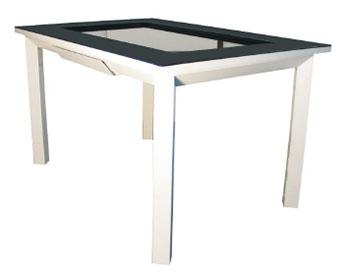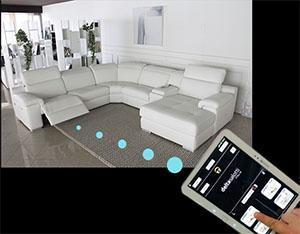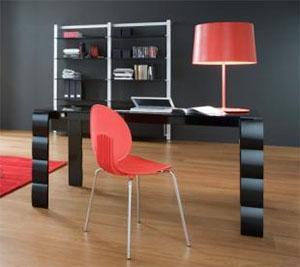Home automation
Post from EditorialsHome automation (applied to the entire house, with simple furniture or appliances) can greatly increase the quality of life and help reduce costs.
Home automation, smart house and the internet of things: some clarity
 Recently, we often hear about home automation, smart house and internet of things, but what exactly these words mean? In this article we will try to do some clarity.
Recently, we often hear about home automation, smart house and internet of things, but what exactly these words mean? In this article we will try to do some clarity.
In general, home automation is the discipline that deals with study and invent new systems to improve the quality of domestic life through the application of high-tech automatic systems for the management of various systems and components, including lights, heating, appliances, opening and closing of doors and windows, the alarm system, video surveillance and so on. By extension, with the same word are also intended the software and technology components commonly used for this purpose.
The smart house (or smart home) is the concrete result of the application of home automation: in fact, in the most advanced systems and software performance with a single, often very intuitive and easy to use, you can control nearly every element of his home.
The word smart, or intelligent, also indicates the possibility to program the house to manage itself also in our absence and/ or without our direct intervention, for example by turning on the heating or alarm system according to predetermined rules, the use of shades and colors of light to us most welcome, or finally the spread of our favorite music. In more sophisticated systems, power management software can even learn our habits and preferences, thus adjusting the various parameters.
The term internet of things means instead the extension of the Internet also to objects, such as appliances or simple elements of decor such as lamps and picture frames.
It is a fundamental principle in home automation, because in this way it is very easy to remotely control the air conditioning/ cooling, lighting or alarm system via a simple app for the tablet or smartphone.
Advantages and disadvantages of home automation
The advantages of automation are more numerous than disadvantages.  In fact, thanks to it you can save a lot of money and a lot of energy, by using much more efficient appliances and transformers, for example, because you can use the washing machine or dishwasher during off-peak when electricity tariffs are cheaper, or turn on the boiler (or the air conditioner) only when the home is actually occupied.
In fact, thanks to it you can save a lot of money and a lot of energy, by using much more efficient appliances and transformers, for example, because you can use the washing machine or dishwasher during off-peak when electricity tariffs are cheaper, or turn on the boiler (or the air conditioner) only when the home is actually occupied.
In addition, the comfort is higher, because you can adjust the lights, open the windows or start the radio without having to get up, significantly increasing the quality of life of the elderly and handicapped.
The only serious drawback, however - besides the cost (which in the most comprehensive and sophisticated systems can not be indifferent) - consists of the dependence on technology: in the case of block or system failure we might in fact find ourselves in serious trouble, and especially unable to control the house. It is therefore essential to provide for each system, component or appliance also a manual back-up.
Home Automation for freelance workers
 Typically, a plant for the home automation is formed by one (or more) touch screen positioned on the wall, or a remote control to bring always with you. In other cases, it is possible to manage every function with your tablet or smartphone via a special app.
Typically, a plant for the home automation is formed by one (or more) touch screen positioned on the wall, or a remote control to bring always with you. In other cases, it is possible to manage every function with your tablet or smartphone via a special app.
However, for the most demanding and technology lovers are highly sophisticated devices now available, including the work-table intelligent Na-If, devised by the homonymous Company Group CEIT: basically, the normal table top is replaced by a large touch screen.
The operation is therefore similar to that of a tablet: you can then open documents and movies, surf the internet, send emails and even draw with a simple touch of a finger. So this is a tool of enormous potential, especially useful for freelancers working in the field of graphics, web design or communication.
In addition, viewing the layout of the house and through special sensors appropriately positioned - that is readjusting technology already widely available on the market - you can also control the home automation system of the whole house.
Smart mobile
 However, home automation can also find applications in narrower scope: various companies have indeed studied the possibility of launching on the marketsmart mobile, that can modify and/ or expand its functions thanks to home automation.
However, home automation can also find applications in narrower scope: various companies have indeed studied the possibility of launching on the marketsmart mobile, that can modify and/ or expand its functions thanks to home automation.
This is the case for example of the sofa proposed by Company Delta Salotti, containing within it a device for the electric drive of the headrest and the position of the seat.
As an optional extra amenities include a sound system and an integrated app for the management of any devices connected to the sofa with a jump lead: from the comfort, can be turned on or off, or turn up the volume of the music or even adjust the lights chandeliers or floor lamps with your smartphone.
The design is very nice, because the devices are perfectly camouflaged in the structure of the cabinet, and therefore have a very modest visual clutter. The Company Dermobil has instead created a line of convertible dining tables, to be adapted to various requirements: the insertion of the extensions takes place via an electric mechanism hidden from view and operated by a remote control connected to an electronic card.
The Company Dermobil has instead created a line of convertible dining tables, to be adapted to various requirements: the insertion of the extensions takes place via an electric mechanism hidden from view and operated by a remote control connected to an electronic card.
The most appealing models are:
- Volcano, minimalist appearance, with legs in aluminum, glass top (available in white or black) and two side extensions;
- A round, with aluminum frame and legs with a rectangular section, available in white or black;
- Flow (pictured above left), with steel, glass and very special design by featuring wavy legs.
79806 REGISTERED USERS










